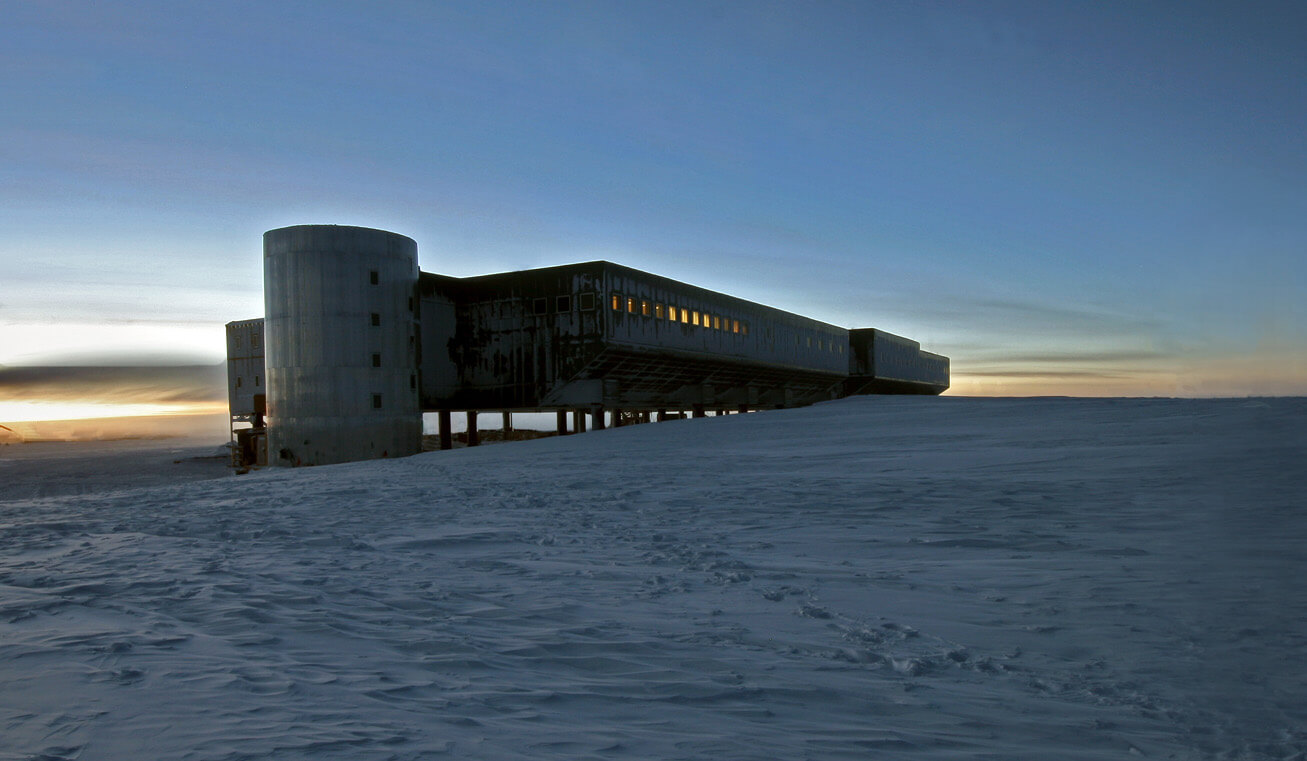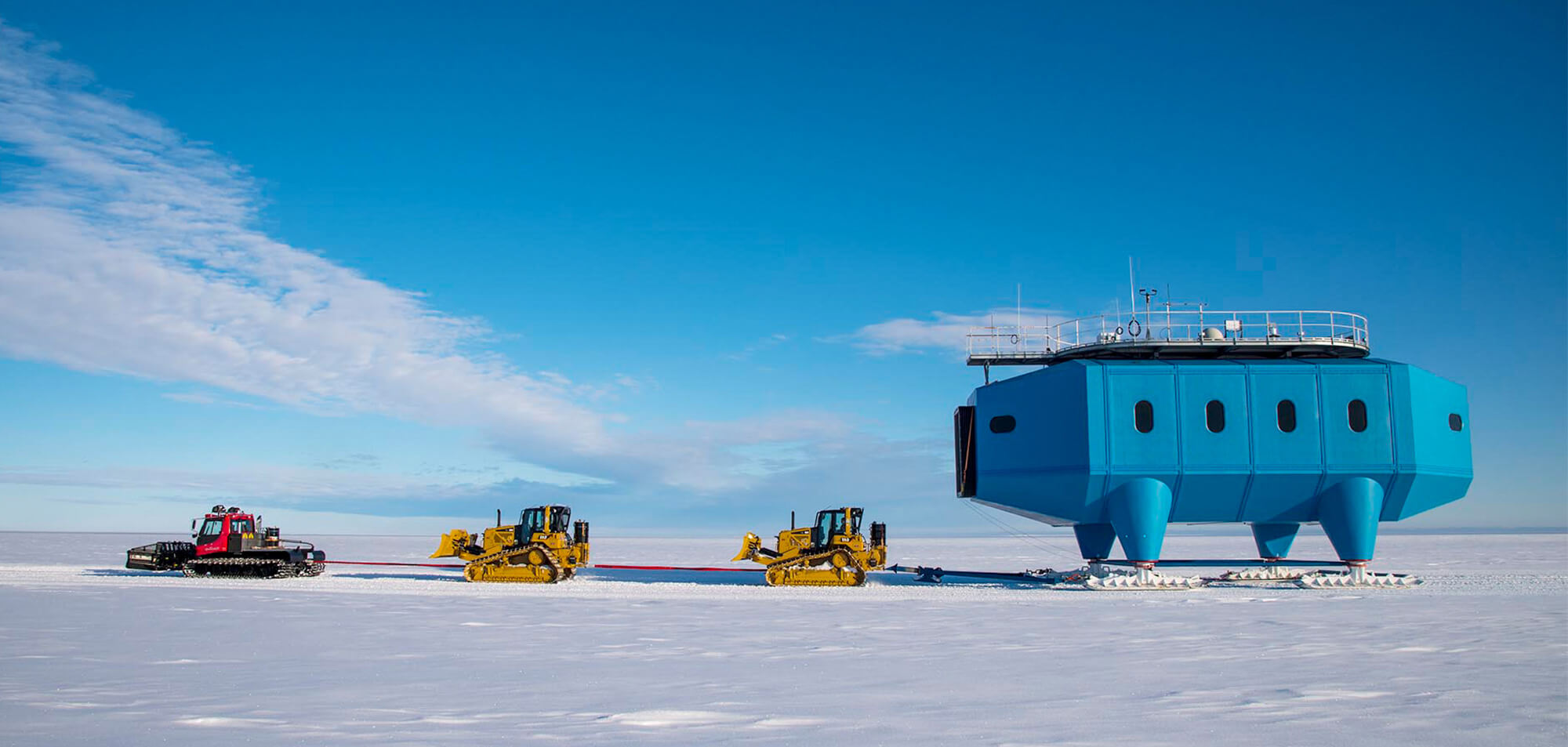description:
The Amundsen–Scott South Pole Station is an American scientific research station at the Geographic South Pole, the southernmost place on the Earth. The station is located on the high plateau of Antarctica at an elevation of 2,835 meters (9301 feet) above sea level.
The original Amundsen-Scott Station was built by the United States Government during November 1956 as a part of its commitment to the scientific goals of the International Geophysical Year (I.G.Y.), an international effort lasting from January 1957 through June 1958 to study, among other things, the geophysics of the polar regions.
Before November 1956, there was no permanent human structure at the South Pole, and very little human presence in the interior of Antarctica at all. The few scientific stations in Antarctica were located on and near its seacoast. The station has been continuously occupied since it was built. The Amundsen-Scott Station has been rebuilt, demolished, expanded, and upgraded several times since 1956.
Since the Amundsen-Scott Station is located at the South Pole, it is at the only place on the land surface of the Earth where the sun is continuously up for six months and then continuously down for six months. (The only other such place is at the North Pole, on the sea ice in the middle of the Arctic Ocean.) Thus, during each year, this station experiences one extremely long “day” and one extremely long “night”. During the six-month “day”, the angle of elevation of the Sun above the horizon varies continuously. The sun rises on the September equinox, reaches its maximum angle above the horizon on the summer solstice in the Southern Hemisphere, around 20 December, and sets on the March equinox.
During the six-month “night”, it gets extremely cold at the South Pole, with air temperatures sometimes dropping below −73 °C (−100 °F). This is also the time of the year when blizzards, sometimes with gale-force winds, strike the Amundsen-Scott Station. The continuous period of darkness and dry atmosphere make the station an excellent place from which to makeastronomical observations.
The number of scientific researchers and members of the support staff housed at the Amundsen-Scott Station has always varied seasonally, with a peak population of about 200 in the summer operational season from October to February. In recent years the wintertime population has been around 50 people.






